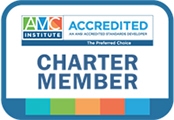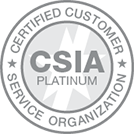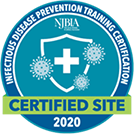what does the future hold for associations and non-profits? we asked the experts at AH
Although the rollercoaster ride of 2020 is behind us, the beginning of 2021 demonstrated that the world at large is still remaking itself — and the need for foresight and adaptability in associations and non-profits is inevitable.
Based on our direct experience as an association management company (AMC), AH’s experts have compiled their predictions of what lies ahead for associations and non-profits in 2021. The result is a list of 2021 trend predictions in 21 different aspects of association management.
With the social unrest and calls to action for racial equality that moved front and center into the world’s consciousness this past year, executive leadership in all organizations, including board governance for associations, are now tasked with examining their depth of diversity, equity, and inclusion (DEI).
“DEI has finally taken center stage and many organizations are making strides to not just talk about how to address diversity, but to develop real actionable approaches to ensure that it becomes part of the organization at all levels,” said Bob Waller, Jr., CAE, President and CEO of AH, when introducing his predictions on executive leadership.
A changing world also brings a changing economy, and associations need to shift with it in order to survive and thrive. This creates the challenge of how to gain more efficiency while remaining financially stable. In his predictions for the AMC industry at large, Chief Executive Relationship Officer Mike Dwyer believes that, “2021 will bring more opportunities” for association management companies to work with different types of organizations than in the past. Dwyer also foresees certain trends in association mergers & acquisitions among smaller organizations and competitive organizations with similar missions.
Another essential driver of change is shifting demographics. We now live in an increasingly aging world — in fact, the World Health Organization (WHO) states that by 2050, the proportion of the world's population over 60 years of age will nearly double to 22%. However, millennials and generation Z are now the largest generational cohort in the workforce, and are expressing the willingness to join and stay with organizations that meet their career development needs. Women all over the world are becoming more empowered and may dominate more professions. All of this will influence the very fabric of membership.
Michele Buggy, CAE, IOM and Association Executive believes that “the pandemic is both highlighting and expediting” this change. Her membership predictions address this specific mindset and the questions associations need to ask themselves in order to navigate these changes.
Along with the shift in demographics, “Components, chapters, special interest groups, and regional groups oftentimes are the lifeblood of an association,” said Veronica Sullivan, Account Executive. Her predictions on component & chapter management offer insight into its increasing importance.
But all of these changes also bring shifting identities/staffing changes. “As we enter 2021, we're still existing in a time of incredible change, and therefore, associations are still operating in crisis mode, “ said Kelly Mariotti, JD, CPA, CAE, Executive Director, Juvenile Products Manufacturers Association. Her predictions include three essentials that successful organizations in 2021 will have in common.
Successful associations also know that an organization’s financial health means more than just membership dues. Revenue generated from event sponsorship and the sale of programs, products, and services makes an association less dependent on dues income and contributes to its reserves. Porter Rice, Industry Relations Manager, predicts the non-dues revenue digital advertising “must-have offering for associations” that will be in high demand in 2021.
An obvious source of that non-dues revenue is often sponsorship, exhibits & advertising. However, Christina DeRose, Industry Relations Manager, says even this source is not impervious to change. Her predictions are that “comprehensive, year-round exposure” will be the new trend in nonprofit event planning and sponsorship, and discusses what that might look like.
However, the value of credentialing as non-dues revenue shouldn’t be discounted. In the new “knowledge economy” — where analysis and thinking are prized and the demand for education creates alternatives to traditional post secondary instruction — MaryBeth Kurland, CAE, Chief Executive Officer, Commission for Case Manager Certification proposes a future where “remote proctoring, virtual training, and virtual site visits will continue to influence and evolve credentialing bodies and their service delivery to reach more organizations and people.” Her predictions are based on what associations need to concentrate on this year to deliver quality certification services to their members.
Yet despite the new opportunities to create new sources of revenue, the ravages of the pandemic have taken their toll on many organizations.
“The worldwide COVID-19 crisis has crippled many associations and nonprofit organizations,” said Gene Terry, CAE, IOM, Executive Director, American Society of Hand Therapists. His predictions about strategic partnerships discuss how implementing them could be a lifeline to recovery and sustainability for struggling associations.
For any association to attain that sustainability, grow, maintain membership, and inform those members about its programs, products, and services, marketing & communications is essential. And in making sure your message is heard in this increasingly fragmented world, knowing your audience is crucial.
Sabina Gargiulo, Vice President of MarCom, Industry Relations, and Web Services, centers her predictions on “hyperconnected gen Z” and their anticipated impact on associations as a “major demographic audience.”
But without data, marketing is a shot in the dark and communication falls on deaf ears.
The trend toward digital socialization and a more splintered society (based on categories like politics, economic status, media choices, etc.) make reaching the right people difficult. This is where having the right AMS data management is critical to allowing “associations and non-profits to better capture pertinent information about their members and prospects,” said Jon Kinsella, Director of Digital Marketing. Also, Melissa DiMatteo, Project Manager, stated, “Well-documented processes and procedures improve service, quality, and efficiencies.” Both Kinsella and DiMatteo see data as a major driving force in their predictions for 2021.
But to get that data, an association needs to attract it and collect it. The elements that do both (and have the ability to affect and change it) are key components of all aspects of an association’s marketing, including content & publishing, social media, video, and graphic design.
By now, you’ve probably heard, ad nauseam, that “content is king.” That’s because it is. But slick, broad campaigns (à la Mad Men or Nike) no matter how beautiful or clever, often fall flat without a proper target.
“There will always be a need for artistry when it comes to content, but data will be a defining element in 2021,” said Sarah Black, MS, Director of Content and Creative. Her predictions for content & publishing center on how data will shape associations’ content.
Social media is another important, yet often misunderstood, delivery system of content and messaging but is a necessary tool that continues to evolve.
“The social media trend that I see shaping 2021 is audio,” said Pete Caniglia, Associate Marketing Manager. Melissa Willhouse, Digital Marketing Coordinator, also predicts that “we’re going to see a lot more video in 2021.”
In fact, demand for video has exploded in the digital realm. “Mobile/social video consumption has been doubling for the past several years with video accounting for 80 percent of global internet traffic,“ explained Melissa Venditti, Video Producer. Her predictions on video center around social video optimization.
A more “quiet” element of marketing in associations is graphic design, but the predictions made by Jenelle Kleiman, Creative Manager, may have associations reconsidering that impression. She discusses how the drastic changes in the way we connected with one another in 2020 could influence visual marketing.
Another aspect to consider for the year ahead is board strategic planning and board members’ responsibilities within an association.
“Associations will take what they learned in 2020 and apply it to their strategic planning and 2021. Specifically, being nimble!” said Amy Williams, CAE, MPA, IOM, AH’s Vice President of Sales and Consulting. Her predictions on strategic planning center around the surprising effects the COVID-19 pandemic had on the nature of planning.
And, as no organization operates within a vacuum, board leadership must also consider recent societal disruptions such as the power of algorithms to influence politics, income inequality in America, declining trust in institutions, and the changes in advocacy due to the shift of power between Congress and regulators, as well as conflicts among federal, state, and local governments. Jodi Araujo, CEM, Vice President of Organization Development, offers her predictions on where the focus of board management and operations will be in 2021.
The year ahead offers many challenges for associations and nonprofit organizations, to be sure, and there is no crystal ball to show us all how it will actually play out. As 2020 has shown us, all the expertise and experience in the world cannot foresee what may be shocking and unprecedented. As 2021 progresses, AH’s staff will be adjusting their predictions to meet the changes and challenges as they arise — the same way our association clients do.
Beth Mauro, Senior Director of Client Services, who offered her own predictions on association foresight, sums it up best: “If 2020 taught us anything, it's that the world can change overnight, and the association world adapted.”




